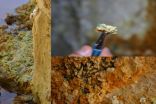(Press-News.org) ATLANTA –January 11, 2013—New guidelines from the American Cancer Society say evidence is sufficient to recommend screening high risk patients for lung cancer with low-dose computed tomography (CT) provided that certain conditions exist:
The patient is aged 55 to 74 years, has at least a 30–pack-year smoking history*, and currently smokes or has quit within the past 15 years.
The patient has undergone a thorough discussion of the benefits, limitations, and risks of screening.
The patient can be screened in a setting with experience in lung cancer screening.
Following the announcement of results from the National Lung Cancer Screening Trial (NLST) in late 2010, the American Cancer Society joined with the American College of Chest Physicians, the American Society of Clinical Oncology, and the National Comprehensive Cancer Network (NCCN) to produce a systematic review of the evidence related to lung cancer screening with low dose CT. The systematic review focused on four key questions: What are the potential benefits of screening individuals at high risk of developing lung cancer using LDCT? What are the potential harms of screening individuals at high risk of developing lung cancer using LDCT? Which groups are likely to benefit or not benefit? And in what setting is screening likely to be effective?
The results of this systematic review were published in the Journal of the American Medical Association in June, 2012, and were used as the basis for these new recommendations, which are being published early online in CA: A Cancer Journal for Clinicians, a peer-reviewed journal of the American Cancer Society. (In 2010, the American Cancer Society issued interim guidance to inform referring clinicians and adults at risk for lung cancer while a full guideline was developed.) The report will appear in print in the March/April 2012 issue of the journal.
In the report describing the new guidelines, the authors say: "Findings from the National Cancer Institute's National Lung Screening Trial established that lung cancer mortality in specific high-risk groups can be reduced by annual screening with low-dose computed tomography. These findings indicate that the adoption of lung cancer screening could save many lives."
They conclude: "At this time, there is sufficient evidence to support screening provided that the patient has undergone a thorough discussion of the benefits, limitations, and risks, and can be screened in a setting with experience in lung cancer screening."
But they caution that more work is needed to fill in existing knowledge gaps related to broadening eligibility for lung cancer screening, to further define early lung cancer detection protocols, and to put in place an infrastructure to support population-based lung cancer screening. "As with other guidelines for cancer screening, we can expect that this initial guideline will be revised as new data become available," write the authors.
As with other cancer screening recommendations, the new lung cancer screening guidance embraces the process of informed and shared decision-making; a thoughtful discussion with a clinician related to the potential benefits, limitations, and harms associated with screening. This discussion should occur before any decision is made to initiate lung cancer screening.
Among the limitations and harms posed by screening are missed cancers, anxiety associated with abnormal results, the need for additional imaging tests and biopsies, investigation of incidental findings not related to the lungs, and exposure to radiation from repeated tests.
The recommendations emphasize that smoking cessation counseling remains a high priority for clinical attention in discussions with current smokers, and that screening should not be viewed as an alternative to smoking cessation.
The hope is that the guideline will lead adults at high risk of lung cancer to become informed about the potential to detect lung cancer early, and to be referred to institutions that can deliver high quality services, and that screening will contribute to additional declines in lung cancer mortality. However, the authors caution that the implementation of high quality lung cancer screening in the U.S. poses many challenges. "Whether community based screening for lung cancer with LDCT will exceed or fail to achieve the benefit observed in the NLST could be influenced by many factors, and the answer awaits the results of further observation and research."
###
*Pack-years are calculated by multiplying the number of packs of cigarettes smoked per day by the number of years the person has smoked.
The full guideline can be viewed at: cajournal.org
Article: Wender R, Fontham E, Barrera E, et al (2013). American Cancer Society lung cancer screening guidelines: CA Cancer Journal for Clinicians. doi: 10.3322/caac.21172. Published online ahead of print at cacancerjournal.com
END
ORLANDO, Fla., January 11, 2013 – Men tend to store fat in the abdominal area, but don't usually have much in the way of hips or thighs. Women, on the other hand, are more often pear-shaped—storing more fat on their hips and thighs than in the belly. Why are women and men shaped differently? The answer still isn't clear, but it's an issue worth investigating, says Steven R. Smith, M.D., director of the Florida Hospital – Sanford-Burnham Translational Research Institute for Metabolism and Diabetes. That's because belly fat is associated with higher risks of heart disease ...
The scientific community have long debated the causal relationship between cannabis use and the risk factor for psychotic illnesses such as schizophrenia. Both sides of this controversial subject are put forward in two articles published today in F1000 Medicine Reports. To give rise to the debate, the authors of each article were given the opportunity to read the opposing side's article drafts and consider their arguments when structuring their own article.
In his article "Cannabis and psychosis: what causes what?" David Castle of the University of Melbourne argues for ...
Misguided killer T cells may be the missing link in sustained tissue damage in the brains and spines of people with multiple sclerosis, findings from the University of Washington reveal. Cytoxic T cells, also known as CD8+ T cells, are white blood cells that normally are in the body's arsenal to fight disease.
Multiple sclerosis is characterized by inflamed lesions that damage the insulation surrounding nerve fibers and destroy the axons, electrical impulse conductors that look like long, branching projections. Affected nerves fail to transmit signals effectively.
Intriguingly, ...
An international team of physicists has calculated the efficiency of a reaction involving an incoming electron kicking out an electron from the metal beryllium (Be) or its hydrogen compound molecules, in an article about to be published in EPJ D. The efficiency, which partly depends on the electron's incoming speed, is encapsulated in a quantity referred to as electron-impact ionisation cross sections (EICS). Electron-molecule interactions matter because they occur in a broad range of applications from the simplest like fluorescent lamps to the most complex, for example, ...
The extent to which three-dimensional structure is required for protein recognition and function is an area of vigorous debate with clear implications for protein engineering. Two differing viewpoints have been put forward in two articles published in F1000 Biology Reports today.
In structuring their arguments, the authors were encouraged to consider the opposing viewpoint, examine the points put forward and critique them in their own articles. This novel collaborative approach has given rise to a considered exchange of ideas and may consequently stimulate further research ...
Researchers at the Centre of Astrobiology have identified microorganisms that live inside salt deposits in the acidic and ferrous environment of the Tinto River in Huelva, Spain. The extreme conditions of these microniches appear to be similar to those of the salt deposits on Mars and Jupiter's moon, Europa. This possibility should be borne in mind on missions operating in these places, such as Curiosity.
The high doses of radiation, lack of moisture and extreme temperature and pressure on the surface of Mars make the development of life difficult. Within this hostile ...
An enzyme treatment which could neutralise the effects of lethal chemicals responsible for the deaths of hundreds of thousands of people across the world has been developed by experts at the University of Sheffield.
Organophosphorus agents (OP) are used as pesticides in developing countries and acute poisoning is common because of insufficient control, poor storage, ready availability, and inadequate education amongst farmers.
It is estimated about 200,000 people die each year across the world from OP poisoning, through occupational exposure, unintentional use and misuse, ...
Athens, Ga. – Even when at rest, the human body is a flurry of activity. Like a microscopic metropolis locked in a state of perpetual rush hour traffic, the trillions of cells that make us who we are work feverishly policing the streets, making repairs, building new structures and delivering important cargo throughout the bustling organic society.
For everything to work properly there must be something to organize and direct the various workers. Enter protein kinases. Like specialized traffic signals, this huge class of proteins is critical for many aspects of cell communication, ...
Researchers used induced pluripotent stem cells (iPSCs) derived from a young patient with Long QT syndrome (LQTS), a congenital heart disorder, to determine a course of treatment that helped manage the patient's life-threatening arrhythmias. The results, which appear in The Journal of General Physiology, could lead to improved treatments for LQTS and other channelopathies, diseases caused by disturbed ion channel function.
iPSCs—adult cells that have been genetically reprogrammed to function like embryonic stem cells—provide a valuable tool for studying diseases and ...
This press release is available in German.
Animals have developed a variety of strategies for dealing with increasing noise pollution in their habitats. It is known, for example, that many urban birds sing at a high pitch to differentiate their song from the low-frequency sound of road traffic. However, as scientists from the Max Planck Institute for Ornithology discovered, this is just a useful side effect. The real reason for this behaviour is that songs at a higher pitch are also automatically louder. The birds can make themselves heard far better in city noise ...




